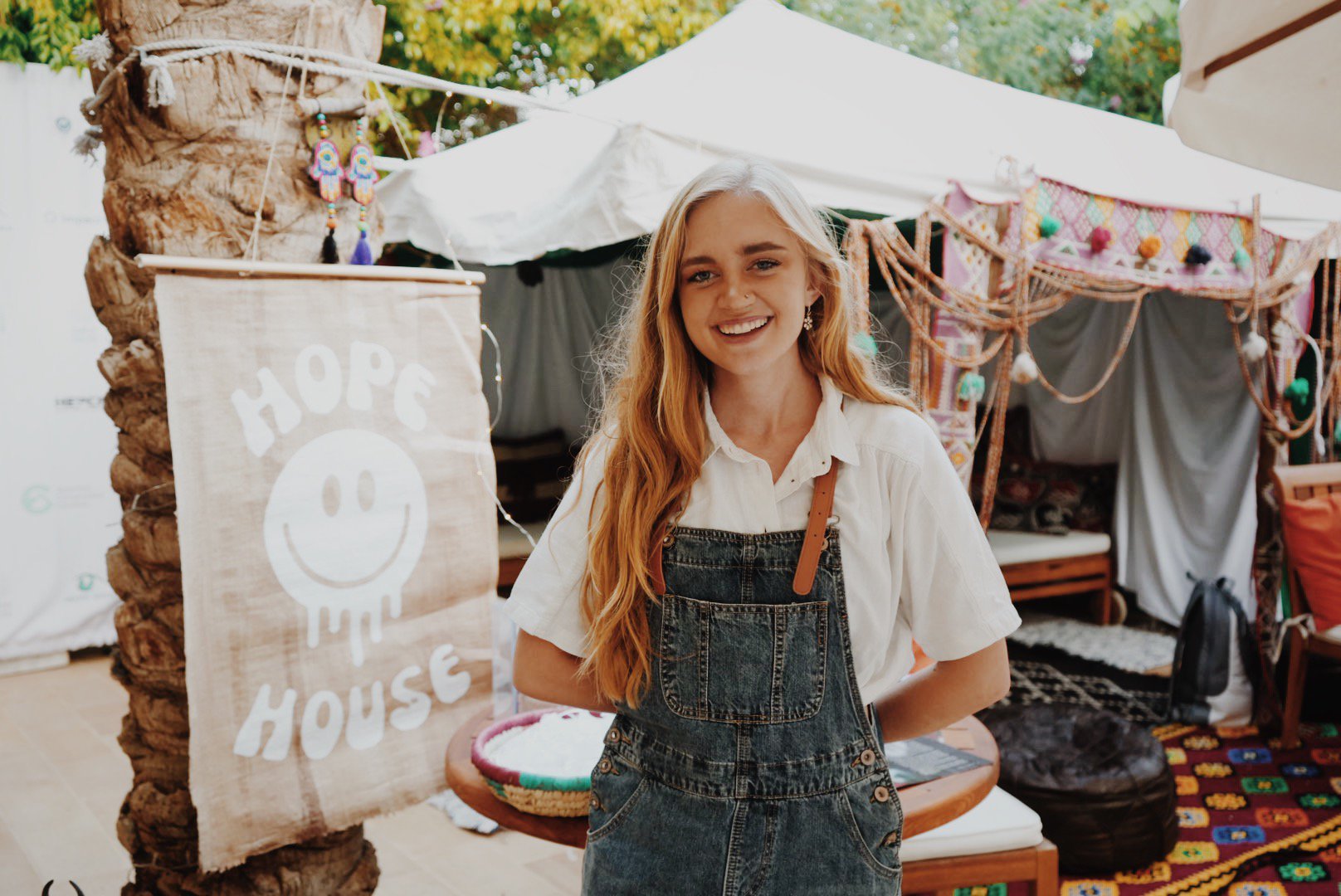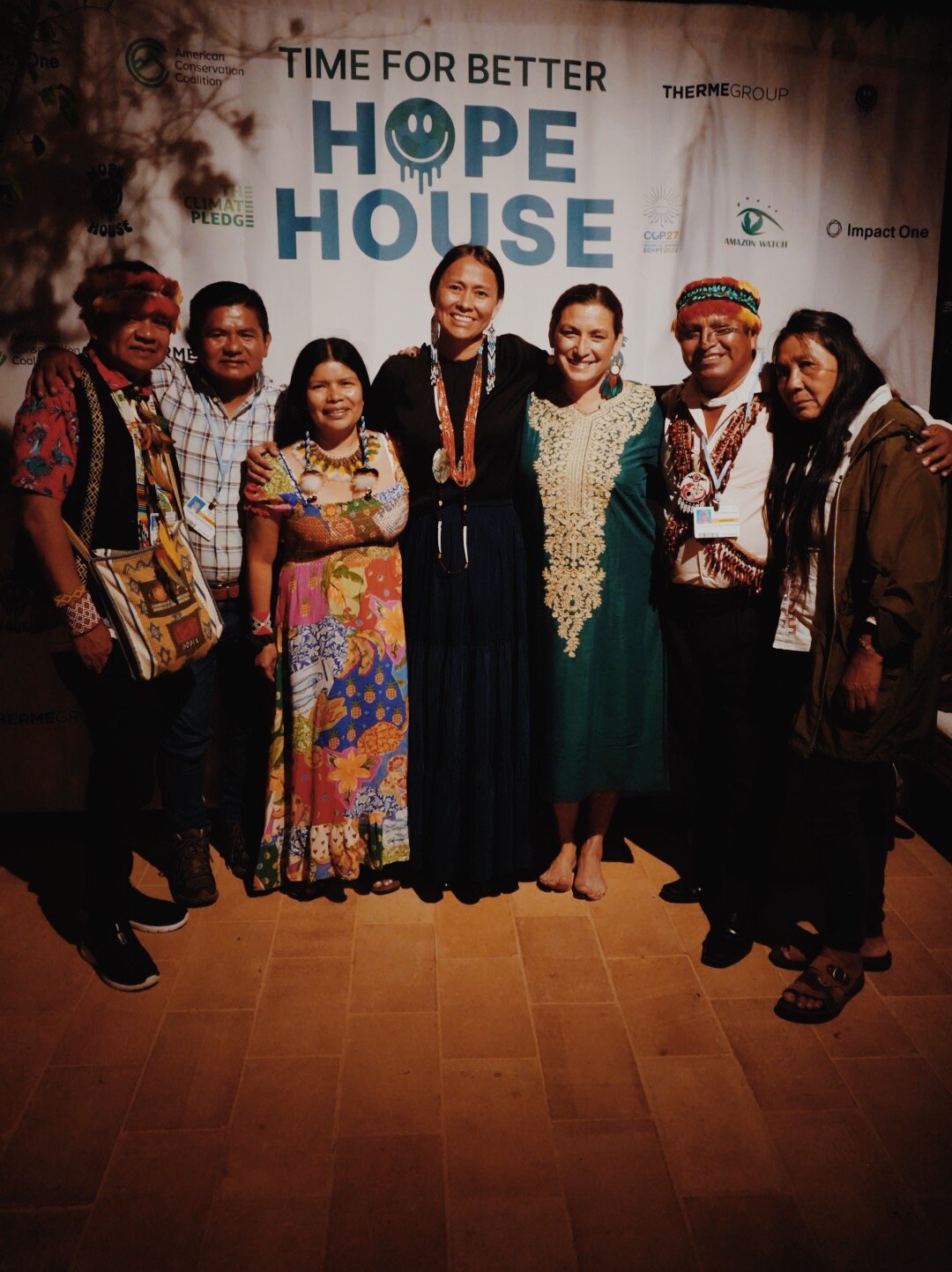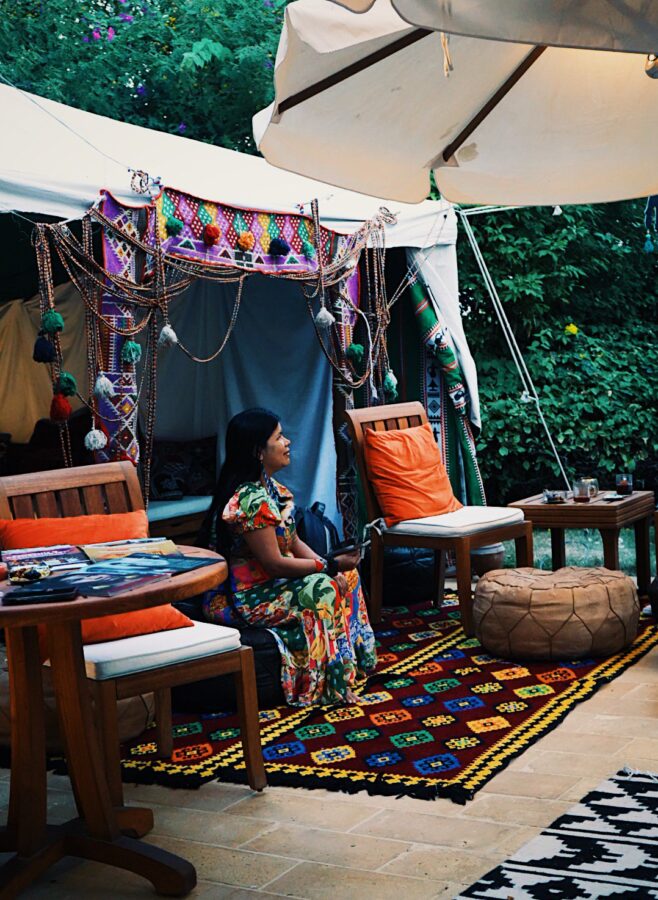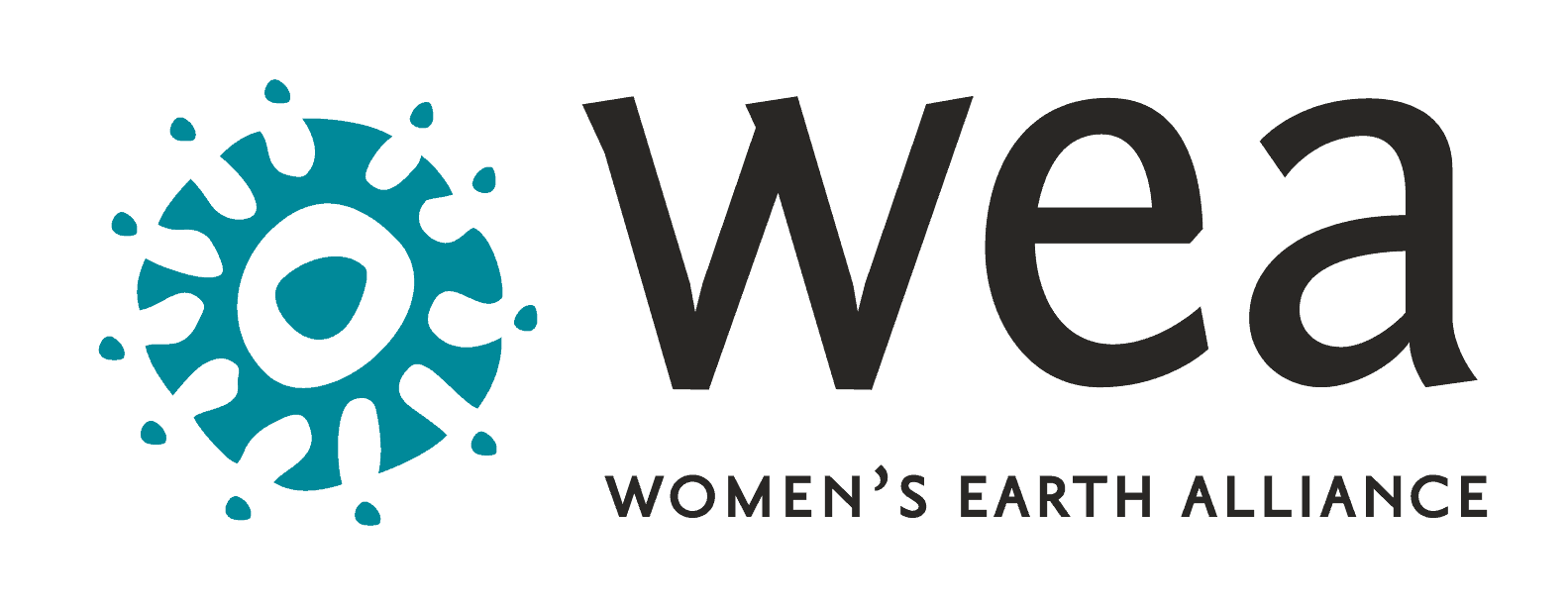My time at COP27: What does women’s climate leadership look like?
Fluorescent lighting. Negotiators and activists wander with tired eyes wearing suffocating suits. Food is scarce. The United Nations Conference of the Parties (COP) can be a sterile space.
"We are not feeling the worst impacts of the climate crisis in these negotiating rooms with AC...This [COP27] is not the real world. The real world is out there; the real world is suffering from drought, the real world is suffering from flooding," stated youth activist Xiye Bastida.
However, women are curating pockets of space among the conference hallways and between the plenaries which blossom with community care, compassion, and culture. As a result, women's climate leadership looks different. Indian artist Shilo Shiv Suleman infused vibrancy into the Blue Zone (closed to the public for negotiations) with her mural "Fearless." The installation "Heaven and Hell" from Egyptian artist Bahia Shehab, made it possible to feel the weight of the climate crisis in the Green Zone (open to the public, for activism).
Women's climate leadership shone outside the Blue and Green Zone in Sharm El-Sheikh.

Bordering the beautiful coral coastline of the Red Sea, Time for Better Hope House worked with women climate leaders around the world in cultivating and reimagining new spaces to convene with climate conferences.
The Yawawana tribe's musical offering sang the coastal rose sunset a lullaby into a star-studded night sky. As we lit candles and positioned plates of nourishing babaganoush, almonds, and dates -- youth activist Nina Gualinga welcomed our panel of Ancestral Wisdom. To the left, the first Indigenous women activists elected to Brazilian congress -- Célia Xakriabá and Sônia Guajajara -- wrapped their arms around each other and spoke of the strides they have made in the leadership space. In the middle, earth advocate, Traditional Drumkeeper, Ponca Tribal Councilwoman, and WEA Leader Casey Camp-Horinek. Casey opened her commentary with a blessing of water, looking down on a shimmering blue pool and beyond to the Red Sea. To her right, Patricia Gualinga spoke of hope. Paty, a women human rights defender and indigenous rights defender of the Pueblo Kichwa de Sarayaku, told stories about how her community has protected the Amazon from mining.
To close our evening of stories that replenished the soul and restored people's hearts for the following days of COP, the Indigenous leaders called for all women to join hands in solidarity. Around the circle were leaders from all corners of our planet—including WEA friends and colleagues Osprey Orielle Lake of WECAN, Leila Salazar-Lopez of Amazon Watch, and Antoinette Vermilye of SHE Changes Climate. It was a powerful space to gather, witness each other, and authentically care for one another.


Gender equity at COP has a long way to go. For example, of 110 heads of state who attended COP27, only seven were women. However, there are glimpses into what our future of women's leadership can look like—spaces that are fundamentally more compassionate, grounded with grassroots solutions that challenge political and culture paradigms, and center the voices of those most marginalized—yet powerful—of leaders.
By Charly Fisk, WEA Programs + Operations Intern
